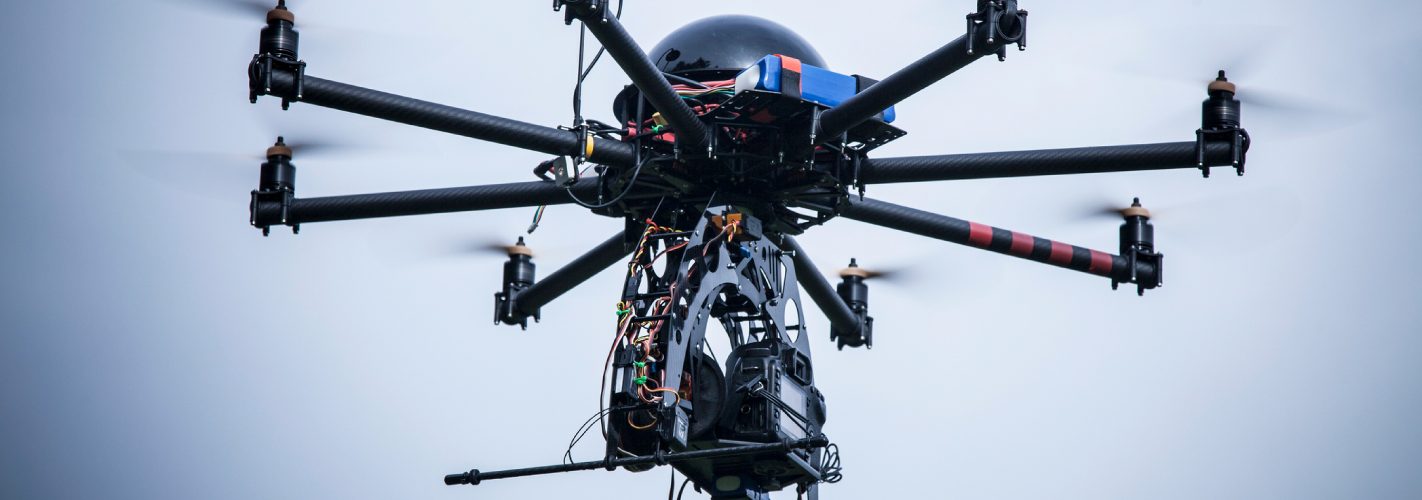Drones are one of the new technologies that analysts cite as a new game changing technology. One author in a premier publication offered typical hand wringing rhetoric about playing a losing game, or being Blockbuster in the age of Netflix. But a simple study of a history of new technologies suggests we shouldn’t be surprised that the U.S. came up with counter technologies so quickly.
The crux of the argument describing the danger of these new systems is that “A military made up of small numbers of large, expensive, heavily manned, and hard-to-replace systems will not survive on future battlefields, where swarms of intelligent machines will deliver violence at a greater volume and higher velocity than ever before. Success will require a different kind of military, one built around large numbers of small, inexpensive, expendable, and highly autonomous systems.”
The discussion of future warfare leaves out the human factor that AI will not replace any time soon. More importantly, our age isn’t the first to face new technology, so we have ways to judge how effective our new systems are. Some scholars point out that the late 19th century was genuinely revolutionary as wind sails on wooden ships were replaced by coal and then oil based iron and steel warships. Thousands of years of traveling by road were replaced by rail. And in warfare, the rate of fire, range, and accuracy of gunpowder weapons increased dramatically.
History
In his book Strategy: The Logic of War and Peace, Edward Luttwak discussed the difference between narrowly focused and highly specialized technologies and broadly focused expensive technologies. The broad technologies could often adapt quickly to new and supposedly game changing technology. Luttwak described how torpedo boats were incredibly small and cost-effective attempts to negate the advantages of large battleships. The latter had difficulty lowering their large caliber guns to attack torpedo boats, and their armor was mainly applied to the upper decks to fight other battleships. By 1914 battleships had made basic but important changes to negate this threat. They added small caliber guns, searchlights, and even had torpedo boat destroyers as escorts to fend off this threat.
In the 1973 Egypt Israeli war, the anti-tank missile seemed to make the tank obsolete. Just like the battleship, it appeared that an inexpensive and easy to use technology would negate a broad and expensive one. The Israeli tanks were caught by surprise, operating alone and without infantry escort. As soon as these rarities no longer existed, the tanks resumed their role as king of a land-based army.
The Present Threat
With this history in mind we might return to the present. In 2016, drones were widely believed to be the new face of fourth generation warfare. These cheap, improvised weapons were grimly effective, destroying at least 56 Iraqi military vehicles and killing or wounding more than 100 Iraqi soldiers. Yet other analysts push back and cite both institutional study and field adaptation that created quick work arounds. By the end of 2015 actually, almost all American soldiers deploying to Iraq had been trained on drone recognition, most had received some basic training on drone defeat, and some had been armed with commercially available counter-drone systems. This training significantly reduced the likelihood that American soldiers would be shocked the first time they saw a small drone in action. Soon after that, the military mastered the art of connecting and de-conflicting military air defense radars, commercial jammers and modified lethal air defense systems — none of which were designed to communicate with each other — to sequentially sense, jam, and if necessary destroy small drones as they approached U.S. forces. In short, the adaption of drones and counter measures to those drones happened in the same timeframe, and the U.S. did much better at making them meaningless than ISIS did at making them potent.
Because of the variety of small drones on the battlefield at the time, no one counter-drone system was enough; instead, units had to build a layered defense in depth, which incorporated a variety of integrated systems to detect, identify, track, disrupt, and eventually defeat small drones. This shouldn’t be a surprise to those who have studied the history of missile defense, which developed, and continues to develop, a layered system of defenses that can defend against new technology. The improved sensors on the F35 and combat air patrol, better radar on Arleigh Burke Class Destroyers, the ability to acquire information from unmanned aerial vehicles (more capable versions of drones), portable missile destroying lasers, and improved close in weapon systems like rail guns have all provided multi layered defenses. That is why new and faster systems, such as China’s carrier killer, or Russia’s hyper sonic missiles probably won’t change the game.
Conclusion
We live during an age of new technologies. When seen in a vacuum, and promoted as click bait, they can seem scary and overwhelming. But the same technology can be employed in a defensive manner. And there is a long history to suggest that new technologies, from the torpedo boat destroyer to drones, will not negate long established platforms. They especially won’t overcome multi layered defenses developed over the last 70 years, and as we’ve seen with counter drone technology, the same innovation and multi layered defenses suggest we shouldn’t be surprised we have so quickly developed defenses.

















